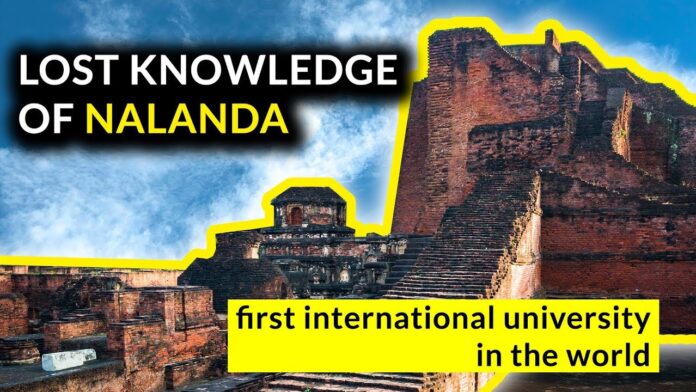
Nalanda University to the World
Nalanda University:- “Taken in men from different metropolitan regions who need to quickly get distinction in discussion, come here in crowds to settle their inquiries, and subsequently the surges (of their understanding) spread all over,” Chinese Buddhist priest Hiuen Tsang said, on his visit to Nalanda University in the seventh century CE. This focal point of taking in then pulled in understudies from as distant as Korea, Japan, China, Indonesia, Persia and Turkey. What’s more not every person who looked for it was allowed affirmation.
Go around 85 km southeast from Patna in Bihar and you’ll go over broken and demolished block structures spread more than 12 hectares. Yet, rewind 1,000 years, and precisely here stood the world’s most transcendent instructive establishment, a grounds of various universities, libraries, private quarters and places of love. Nalanda was arranged simply off a significant shipping lane that went through the adjoining city of Rajgir, the primary capital of the Magadha Empire. Rajgir was only 35 km south of Nalanda. Buddha and Mahavira both invested very some energy in Rajgir, conveying addresses. So it is very conceivable that the two of them invested energy in the Nalanda region.
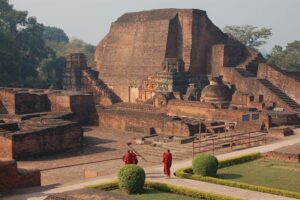
Hiuen Tsang notes in his travelog that the ground on which Nalanda stood was initially a mango plantation. In the sixth century BCE, 500 vendors mutually purchased this land for ten koti of gold coins and talented it to the Buddha, who lectured the laws of Buddhism here, for the following three months. This unique blessing was trailed by a constant progression of different gifts through hundreds of years, by progressive sovereigns.
Taranatha, a Tibetan Buddhist researcher of the seventeenth century, says that in the third century BCE, Emperor Ashoka (r. 269 – 232 BCE) fabricated a stupa here to hold the remaining parts of Sariputta, one of the Buddha’s main pupils, who was additionally brought into the world in Nalanda. This guaranteed Nalanda’s importance as a position of journey.
Be that as it may, it is more hard to decide when Nalanda turned into a group and a school with a few corridors of learning. Also there is banter about whether it can genuinely be known as a college, or may all the more precisely be depicted as an ascetic complex. Whatever the appropriate response, it was one of the world’s first endeavors at the coordinated transmission of information, an endeavor that supported itself over a continuous 700 years, passing on behind ruins that guests keep on wondering about today.
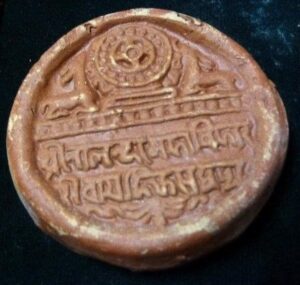
Proof found at Nalanda recommends that the college has a set of experiences going back just to the extent the Gupta Empire of the fifth century CE. This depends on the way that the most seasoned seal recuperated during unearthings here bears the engraving Kumaramatyadhikarana in Gupta script from the fifth century.
However, history specialists like K A Nilakanta Sastri propose the third or fourth century CE denoted the beginnings of the scholarly development that would make Nalanda the extraordinary focus of discovering that it later became. Amalananda Ghosh, past Director-General of the Archeological Survey of India (ASI), gives some archeological confirmation to Nalanda’s dating. He says the fundamental stupa at Nalanda gives indications of being renovated no under multiple times after its unique establishment, and the fourth rebuilding has delightful plaster figures of the Buddha and Bodhisattvas on them. There are likewise engravings of Buddhist texts on blocks in the center of votive stupas, which highlight some time in the sixth century CE. Considering the gigantic aggregations whereupon the fifth adaptation sits, Ghosh induces that the establishment of the first stupa probably been laid around two centuries sooner.
Hiuen Tsang ascribes the establishment of the Nalanda foundation to one Sakraditya. Student of history Father H Heras distinguishes Sakraditya as Gupta Emperor Kumaragupta I (r.c. 415-455 CE). Kumaragupta I’s replacements later broadened and extended the establishment, fabricating extra cloisters and sanctuaries. After the decrease of the Guptas in the sixth century, the most outstanding supporter of the mahavihara or uber cloister was Harsha, the seventh century CE Emperor of Kannauj.
Harsha dispatched the incomes of around 100 towns as an enrichment to the establishment and 200 householders in these towns contributed the necessary measure of rice, spread and milk consistently. Around 1,000 priests from Nalanda were available at Harsha’s imperial assemblage at Kannauj. It was in his court that Hiuen Tsang was a visitor prior to turning into an understudy at Nalanda.
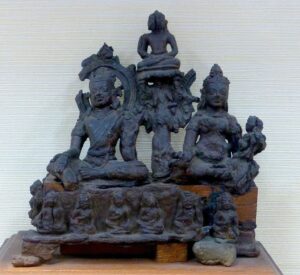
Hiuen Tsang contemplated here under the direction of Shilabhadra (529-645 CE), the revered top of the organization at that point. The Chinese researcher makes reference to that there were 1,510 educators and 10,000 priests then, at that point. Frederick Asher, an expert in South Asian workmanship and creator of Nalanda: Situating The Great Monastery (2015), accepts these numbers were overstated. He composes that “recall that Hiuen Tsang composed his travelog after his re-visitation of Xian and that he had an interest group”. Such countless priests would require an immense measure of room and assets, and the unearthed remains don’t recommend that sort of scale.
Indologist A L Basham too accepted the numbers in Hiuen Tsang’s compositions weren’t steady with current finds at Nalanda. He felt the quantity of priests might have pretty much surpassed 1,000. Excavator H D Sankalia put that number at around 4,000.
Despite the numbers, the establishment had started to draw in the sort of staff that would stand out forever. Among them were Dinnaga, the sixth century originator of the middle age school of rationale; Dharmakirti, the seventh century essential scholar of Buddhist atomism; and Padmasambhava, the eighth century organizer of Tibetan Buddhism.
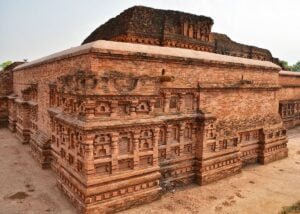
Conventional Tibetan sources, including the works of Taranatha, notice the presence of an incredible library at Nalanda named Dharma Ganj (Piety Mart), which involved three enormous multi-story structures – the Ratnasagara (Ocean of Jewels), the Ratnodadhi (Sea of Jewels) and the Ratnaranjaka (Jewel-Adorned). These structures more likely than not been home to many original copies and books on points going from the Vedas and religion to syntax, rationale, writing, crystal gazing, space science, medication, law, city-arranging, theosophy and reasoning.
All understudies at Nalanda were relied upon to be knowledgeable in the principles of the Mahayana and Hinayana orders of Buddhism. Their educational plans additionally included standard discussion and conversation. In any case, once more, there is no proof of what was shown other than the records of voyagers. Asher composes that on the seals found here, the whole perplexing was alluded to as the Nalanda Mahavihara (uber religious community), not Nalanda Vidyalaya (college). Thus he accepts that Nalanda was centered around strict texts and their translations rather than on subjects of more extensive liberal schooling.
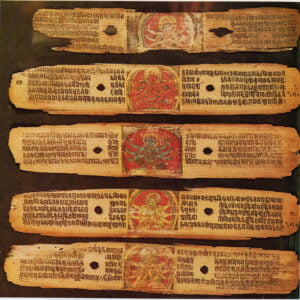
I-tsing was one more Chinese Buddhist priest at Nalanda, who continued in the strides of Hiuen Tsang. He showed up in India in 673 CE and is accepted to have gone through 10 years at the college. The majority of what we are familiar Nalanda today is from the movement records of Hiuen Tsang and I-tsing. The last option depicted that the base age for admission to Nalanda University was twenty years. He expresses that there were eight corridors with upwards of 300 condos nearby. He composed that day to day existence at Nalanda incorporated a progression of rituals rehearsed by all. Every morning, a ringer was rung, flagging the washing hour, which prompted hundreds or thousands of priests continuing from their viharas (religious communities) towards various incredible pools in and around the grounds. The following gong flagged that it was the ideal opportunity for the custom bathing of the sculpture of the Buddha. The chaityavandana directed in the nights incorporated a ‘three-section administration’ and the reciting of an endorsed set of songs from sacred writings. This ceremonial was finished by dusk.
Nalanda was managed by a get together directed by senior priests. It met in conventional meetings to choose undertakings and issues of the executives. The principles of the college were serious, and all clerics will undoubtedly notice them..

From the center of the eighth century CE, Nalanda partook in the supported support of the strong Pala leaders of Bengal (eighth to twelfth century CE). They valued and treasured the instructive foundation, constructing new designs and redesigning old ones. The ninth century ruler Devapala seems to have been Nalanda’s most recognized supporter in this age. Various metallic figures containing references to Devapala have been found among the vestiges. The Palas were productive manufacturers, and their line managed the foundation of four different colleges displayed on Nalanda, at Jagaddala, Odantapura, Somapura and Vikramashila.
Other conspicuous rulers who were benefactors of Nalanda included Shashanka of the Gauda realm (r. 590-625 CE ), Bhaskaravarman of Assam (625 CE), Bhoja I of the Gurjara-Pratihara line (850 CE), and Govindachandra of the Gahadvala custom (1130 CE). There is likewise archeological proof of contact with the eighth century Shailendra tradition of Indonesia, one of whose lords constructed a religious community in the complex.
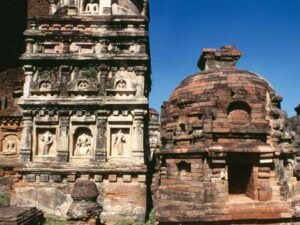
The various religious communities in Nalanda were kept up with by various realms, and served many interests other than the learning and protecting of travelers. Dealers and envoys may have utilized them to additional productive exchange relations and cordial political intercourse between realms. The craftsmanship and design at Nalanda likewise added to the improvement of Buddhist symbolism, and various Mahayana and Vajrayana pictures are accepted to have first arisen here.
It probably seemed like Nalanda would live as long a day to day existence as Buddhism, yet the mahavihara would before long experience various blows. The ascent of Hindu methods of reasoning and Bhakti Movement wave in the subcontinent and the melting away of the Buddhist Pala tradition in the twelfth century were the first. The college likewise endured the worst part of political and philosophical breaks. A type of Buddhism became famous that was driven by thoughts of tantrism, a faith in the adequacy of charms and spells, and mystery practices and customs.

The last blow was conveyed when Nalanda’s actually thriving religious communities were invaded by the Afghan military boss Bakhtiyar Khilji, during his attack of Northern India at the turn of the thirteenth century. He scoured and annihilated Nalanda and afterward proceeded to burn the colleges at Odantarpuri and Vikramshila as well. The contemporary Persian history specialist Minhaj-I-Siraj, in his narrative Tabaqat-I-Nasiri, composed years and years after the fact, detailed that “a huge number of priests were singed alive and thousands decapitated as Khilji made an honest effort to evacuate Buddhism. The consuming of the library proceeded for a considerable length of time and smoke from the consuming compositions hung… like a dim pall over the low slopes”.
All things considered, Nalanda, or if nothing else parts of it, dealt with a restoration. A Tibetan priest Dharmasvamin visited Nalanda in 1235 CE. He specifies that the majority of the structures had been harmed and fallen into dilapidation. And, after its all said and done he found a 90-year-old educator named Rahula Shribhadra was training a class of around 70 understudies. He read up under him for a very long time. However, this was only an apparition Nalanda’s radiant past.
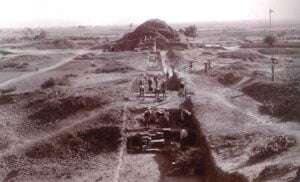
For quite a long time after, Nalanda remained to a great extent neglected. Until Francis Buchanan-Hamilton, a Scottish doctor working for the Bengal Medical Service, reviewed the site in 1811-12 and tracked down some Brahmanical and Buddhist symbolism and detailed it to the ASI. It required close to 50 years more until, during the 1860s, the then ASI Director-General, Alexander Cunningham, distinguished the district as the one referenced in the travelog of Hiuen Tsang. To affirm this, the main fundamental unearthings started.
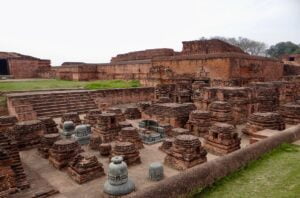
It would be another 50-odd years until, in 1915, methodical unearthings started, and eleven religious communities and six block sanctuaries, organized in a systematic format, were uncovered. A 30-meter-wide entry was found, that ran from north to south of the remains. The chaityas (supplication lobbies) are organized toward the west of this section. To its east, arranged, were the remaining parts of the viharas.
Frederick Asher said it was conceivable that Nalanda extended a long ways past the as of now unearthed cutoff points of the complex. Landsat pictures have uncovered water bodies, tanks or pokharas that encompass the grounds, giving an elective edge that additionally demonstrates a rich cultivating belt might have been important for the mahavihara, giving food to those in the cloisters. Asher proposed that the encompassing towns – Bargaon, Surajpur and Begumpur – may have been a piece of the mind boggling too, given the enormous number of relics still to be found there.
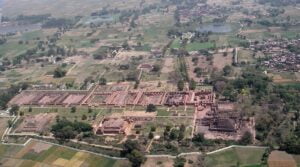
Many models in stone, bronze and plaster were recovered from Nalanda and encompassing regions. These remember pictures of the Buddha for various stances, just as those of other Buddhist divinities like Marichi, Maitreya, Jambhala, Vajrapani and Avalokitesvara. Figures of Hindu divinities, for example, Shiva-Parvati and Mahishasura-Mardini were likewise found. Other than these, copper plates, terracota ancient rarities, stoneware, coins, seals and engravings were uncovered, a significant number of which are in plain view at the Nalanda Archeological Museum, arranged close to the remnants.
In 2016, the Archeological Site of Nalanda Mahavihara was pronounced a World Heritage Site. Two years before that, in 2014, the Government of India paved the way for a restored Nalanda University in Rajgir. It has been assigned an Institution of National Importance by Parliament. With regards to its tradition of greatness and its multicultural past, the main chancellor of the college was Nobel Laureate Amartya Sen; the second was previous Singapore Minister for Foreign Affairs George Yeo.
www.GKDuniya.in will update many more new jobs and study materials and exam updates, keep Visiting and share our post of Gkduniya.in, So more people will get this. This content and notes are not related to www.GKDuniya.in and if you have any objection over this post, content, links, and notes, you can mail us at gkduniyacomplaintbox@gmail.com
And you can follow and subscribe to other social platforms. All social site links in the subscribe tab and bottom of the page.
Important Links
Particulars Official Links |
Related Links |
Official Site |
View more at website |
You-tube |
GKDuniya9 |
|
|
GKDuniya.in, IndiaDigitalHub |
|
|
GKDuniya.in |
Another site visit |
Indiadigitalhub.com |
Get new updates |
Click here |
Tags:- who destroyed nalanda university, nalanda university was built by, ancient nalanda university, nalanda university ranking, nalanda university library fire duration, nalanda university history pdf, nalanda university upsc, nalanda university – wikipedia, features of nalanda university, who destroyed nalanda university, nalanda university was built by, ancient nalanda university, nalanda university ranking, nalanda university library fire duration, nalanda university history pdf, Is Nalanda the first university of the world?, Which country is Nalanda University?, What was Nalanda University world famous for?, Is Nalanda University good?, nalanda university, nalanda university history, the history of nalanda university, history of nalanda university, about nalanda university history, who destroyed nalanda university, nalanda university india, nalanda university open, ancient nalanda university, nalanda university ancient, nalanda university, nalanda university history, nalanda university history in hindi, nalanda university information, nalanda university library fire duration, nalanda university upsc, nalanda university patna, nalanda university admission 2020, nalanda university in hindi, nalanda university history pdf, who destroyed nalanda university, 10 lines about nalanda university, new nalanda university, where is nalanda university situated, open nalanda university, write a short note on nalanda university, international nalanda university, nalanda open university, nalanda open university student login, nalanda open university exam date 2021, nalanda open university contact number, nalanda open university courses


